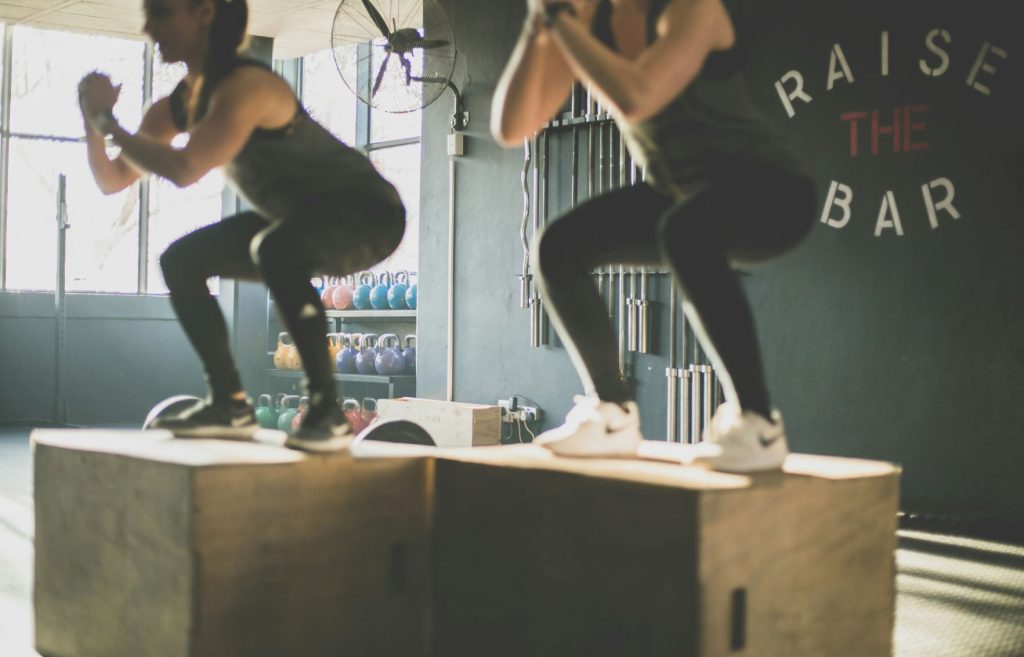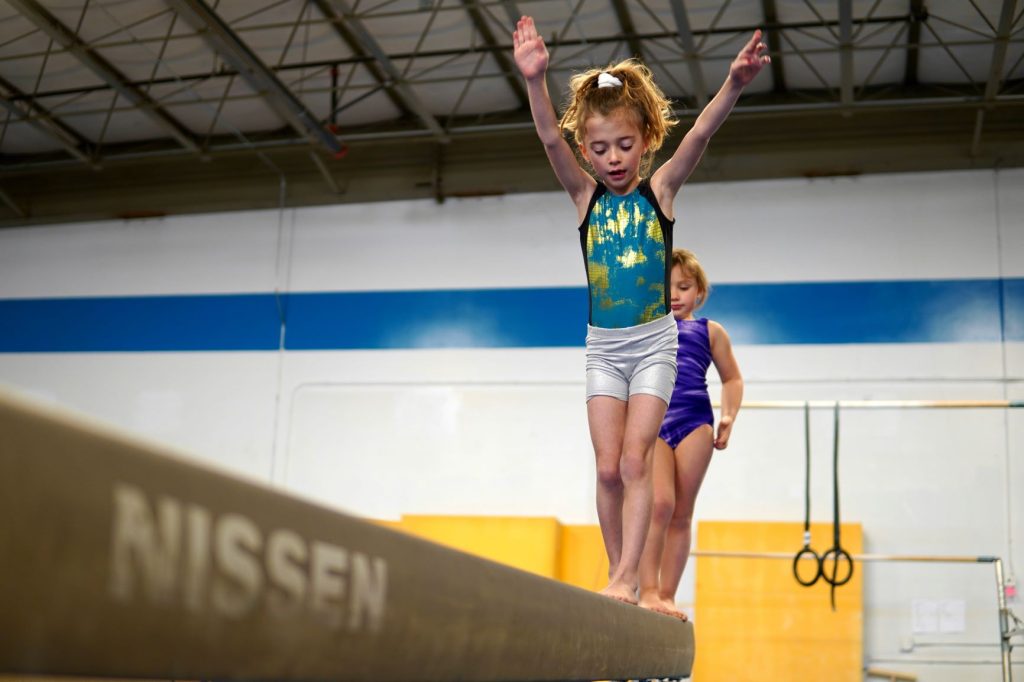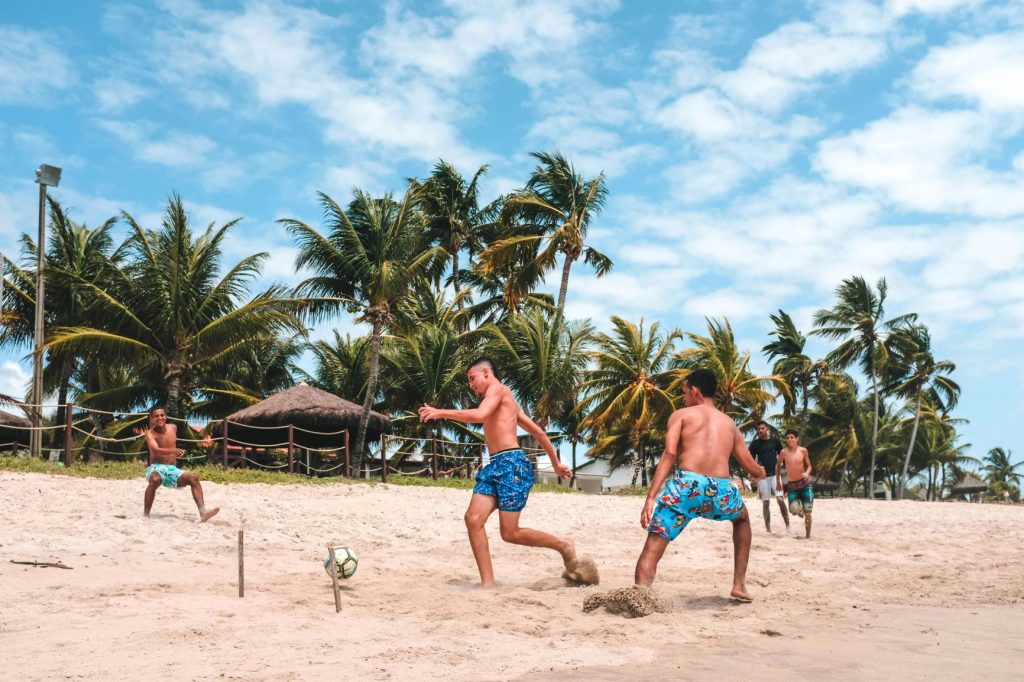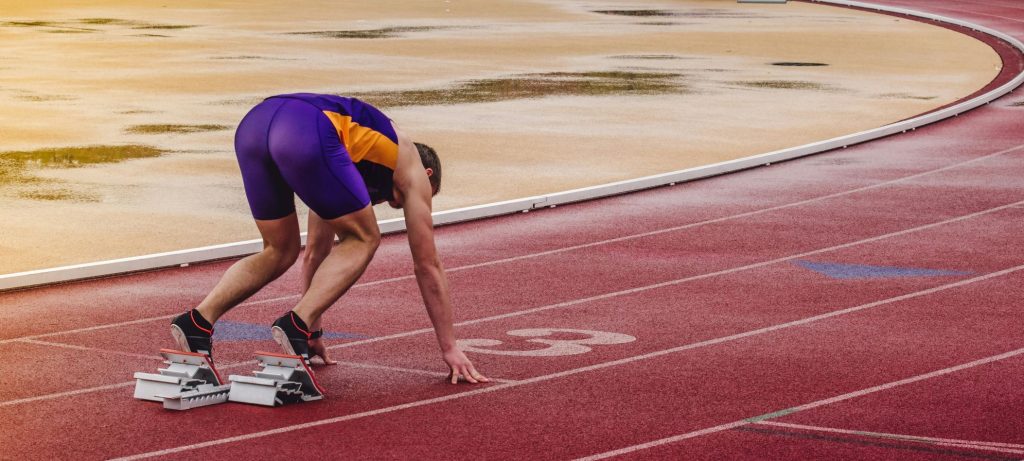When talking about childhood fitness we discuss three main aspects: athleticism, stamina, and body composition. All three work together to produce a fitness level that allows your child to be active and healthy. The athletic aspect of fitness is often hard to define. One may wonder what exactly makes a child or even an adult athletic. The next question would be can we increase our athleticism.
Is athleticism a product of genetics and can’t be changed or is our children’s athleticism a skill that can be improved? It is actually both. There are some kids who it is obvious in the first few years of life that they have more control of their bodies than other kids their same age. I have seen it in elementary school kids when they first start to play team sports. For some kids it is obvious that there is something different about their coordination and certain skills come naturally to them. But I have also seen kids who over time with practice can improve their level of athleticism. For these kids it takes practice and time and usually it is because they want to improve and not because a parent is pushing them.
Agility
So what exactly are the ABC’S of Fitness? Let’s first talk about Agility. This is the ability to change the body’s position rapidly. If a child has agility they can accelerate and decelerate and move side to side quickly. It is the integration of balance, footwork and coordination. Agility can be improved with repetitive movement or practice. Muscle motor memory helps children become more agile. As a child becomes more proficient many movements become reflexive and the child doesn’t have to give any thought.
At an early age agility is improved just through play. The best play will be free play that allows the child multiple opportunities of movement. Running in a backyard or playground would be the simplest of environments. Having obstacles that kids can run around and jump over is another way to improve agility. Even playing tag can help improve agility. As kids get older, having them train with cones or ladders that lay on the ground is an excellent way to make them more agile.

Balance
Balance is an often overlooked part of athleticism. Balance is the ability to stay upright and stay in control of our body movement. There are two types of balance. There is static balance that is the ability to hold our body in a specific posture. This would be when we are doing an activity while standing or doing something like a yoga pose. With static balance a child is able to stay in a stable position with minimal movement. The second type of balance is dynamic balance. Dynamic balance is the ability to perform a function while maintaining a good position. Dynamic balance may be the most important because most athletics take place with movement. But developing good static balance is the best way to improve our dynamic balance.
Practicing balance is not a common activity. Practicing static balance is usually through stretching and yoga which is not done very often at any age. Little kids in the first stage or two of fitness may on a whim do these or they may mimic a parent or sibling who is doing them. Some older kids may do yoga for fitness or do them as a part of training for a specific sport. All the while just a few minutes of yoga 2-3 times per week has been proven to improve athleticism and help prevent some injury.
The easiest way to practice dynamic balance for young children is to play. Playing on a balance beam, walking on a sidewalk edge or down a train rail are all ways to practice balance while just having fun. Maybe the best way to practice dynamic balance is to play on an unstable or uneven surface. For older children especially those in sports the best way to practice is to have sport specific drills or to use a balance ball.

Coordination
Coordination is what most of us think about when we define athleticism. Coordination is having the ability to use multiple muscle groups at one time. A great example of this would be tennis. During tennis you are using your legs to run on the court to get to the ball. At the same time your core is keeping you balanced and your arms and shoulders are being used to swing the racket to make contact with the ball that your eyes have been tracking. Coordination is an often complex movement that is built on multiple skills learned through muscle memory and then used almost without thought to perform an act.
The only way to improve coordination is through repetition. Repeating a task over and over is how we produce motor memory and can lead to learning varied skills. We have a blog that covers muscle memory in depth.

Speed
When we think of athletes we often think of speed. Athletes are generally fast. Speed has a definite genetic component. Some of our kids are gifted with speed and others are not. But we can get faster. The best way to get faster is to run. This seems obvious but what I mean is that any running will help with your child’s form and leg turn over. Especially when they are young, kids become more proficient with their stride just by running and without instruction. Some kids when they are older can benefit from run training through programs like sport acceleration. I suggest these programs only for kids in the third or fourth stage of fitness (middle and high school) and only when they want to participate.

Now that you have read about the ABC’S of childhood fitness (Agility, Balance, Coordination and Speed) try to incorporate these activities into your child’s week. In the end they will be in better shape and have more abilities to be active as they get older.
